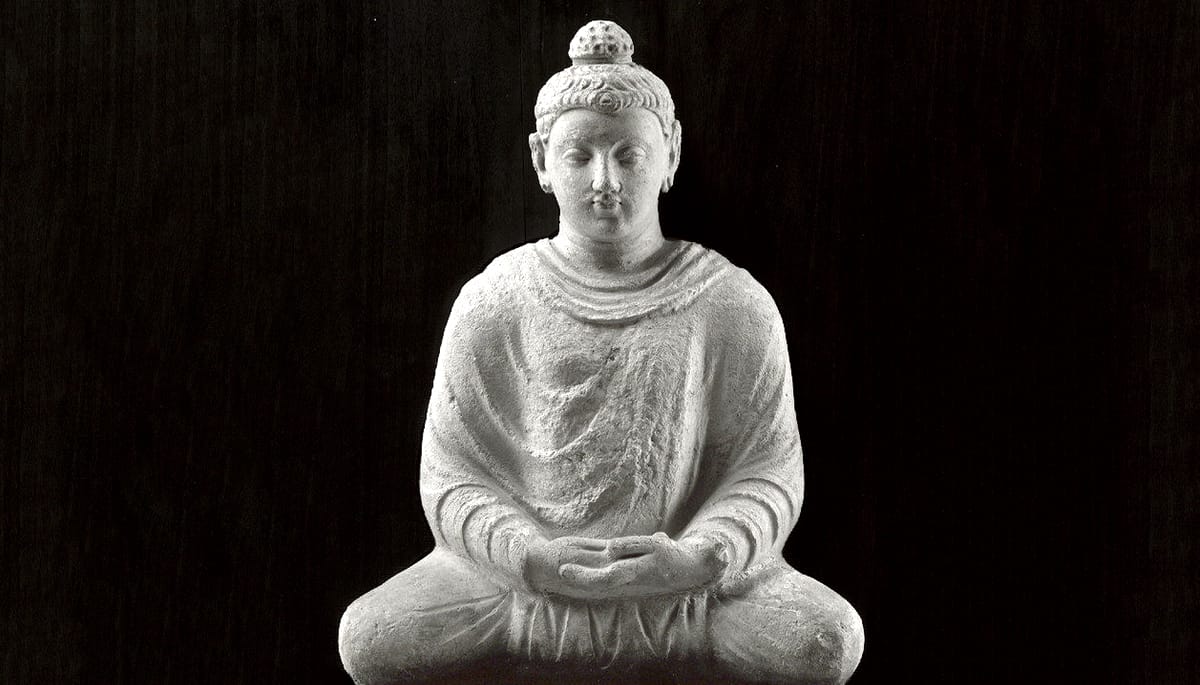In the tradition of the buddhadharma that traveled from ancient India to Tibet (and, more recently, to various points west), the two main kinds of meditation practiced are shamatha (peaceful or calm abiding) and vipashyana (insight). These are two different but complementary types of training and a doctrinal description of what is completely natural to us: our innate wakefulness. Shamatha–vipashyana is yet another name for our original nature, also known as awakened heart, buddhanature, or basic goodness.
Essentially, the path of meditation involves using spiritual disciplines, or trainings, to help us uncover our innate nature.
A meditator progresses from a starting point, to the journey itself, and then finally to the result. Traditionally this arc is described as the ground, path, and fruition. The starting point or ground is our naturally awakened buddhanature, which is fundamentally stable (calmly abiding) and attuned to reality (insightful). The path begins with calm abiding meditation practice, continues with the cultivation of penetrating insight into reality, and ultimately unites the two, which are indivisibly present from the very beginning.
Calm abiding meditation develops the mind’s inherent stability, clarity, and strength. We place our attention on the body or the breath, notice when it moves away, and gently return to resting the mind one-pointedly. Gradually, we overcome what Suzuki Roshi called our “monkey mind,” our habitual patterns of wildly grasping after objects of pleasure. Eventually, even subtle obscurations of mental dullness and lethargy dissolve in the pacifying coolness and stable clarity of shamatha.
Insight meditation turns the mind away from delusion, our confused notions about ourselves, others, and our world. It turns the mind toward the reality of things as they truly are. The classic metaphor is that insight allows us to see that what we perceive to be a dangerous snake is actually a harmless rope. Equally important—considering the immense number of challenges currently facing life on our planet—insight allows us to see that what we have complacently assumed to be a rope is actually a snake urgently demanding engaged action.
According to the Tibetan meditation master Jamgon Kongtrul the Great, insight meditation helps us understand, in a series of progressive steps, the truths of egolessness, emptiness, and great joy. These experiences on the path of meditation depend on our motivation for engaging in practice. It has been said that the greatest single factor determining the success of our meditation is motivation, or right intention. If we approach the practice of meditation as a way to calm down from a stressful week, then that will be the result: a temporary reduction of stress. If we approach practice as a means of freeing ourselves from the confining mental imprisonment traditionally called samsara, then vipashyana meditation will lead to personal liberation from a fixed notion of self. If our practice is inspired by the compassionate intention to be of service and alleviate the suffering of others, the union of shamatha and vipashyana can lead to complete enlightenment and the ensuing buddha-activity benefitting others. In the Tibetan Buddhist tradition, this fruition of shamatha and vipashyana is practiced as Mahamudra and Maha Ati meditation, the full recognition of mind’s original nature.
The fruition of this meditative path that balances stability and insight is compassionate action. The Buddha’s original eight-fold path of right speech, right livelihood, and so forth, is actually a description of a complete way of life, not just a religious practice. We join right mindfulness with awareness as part of a total awakening—not just a private sense of “my spiritual life,” but a globally responsive panoramic awareness. We see the results of walking the path of meditation in the peacefulness and bravery we manifest in everyday life.

